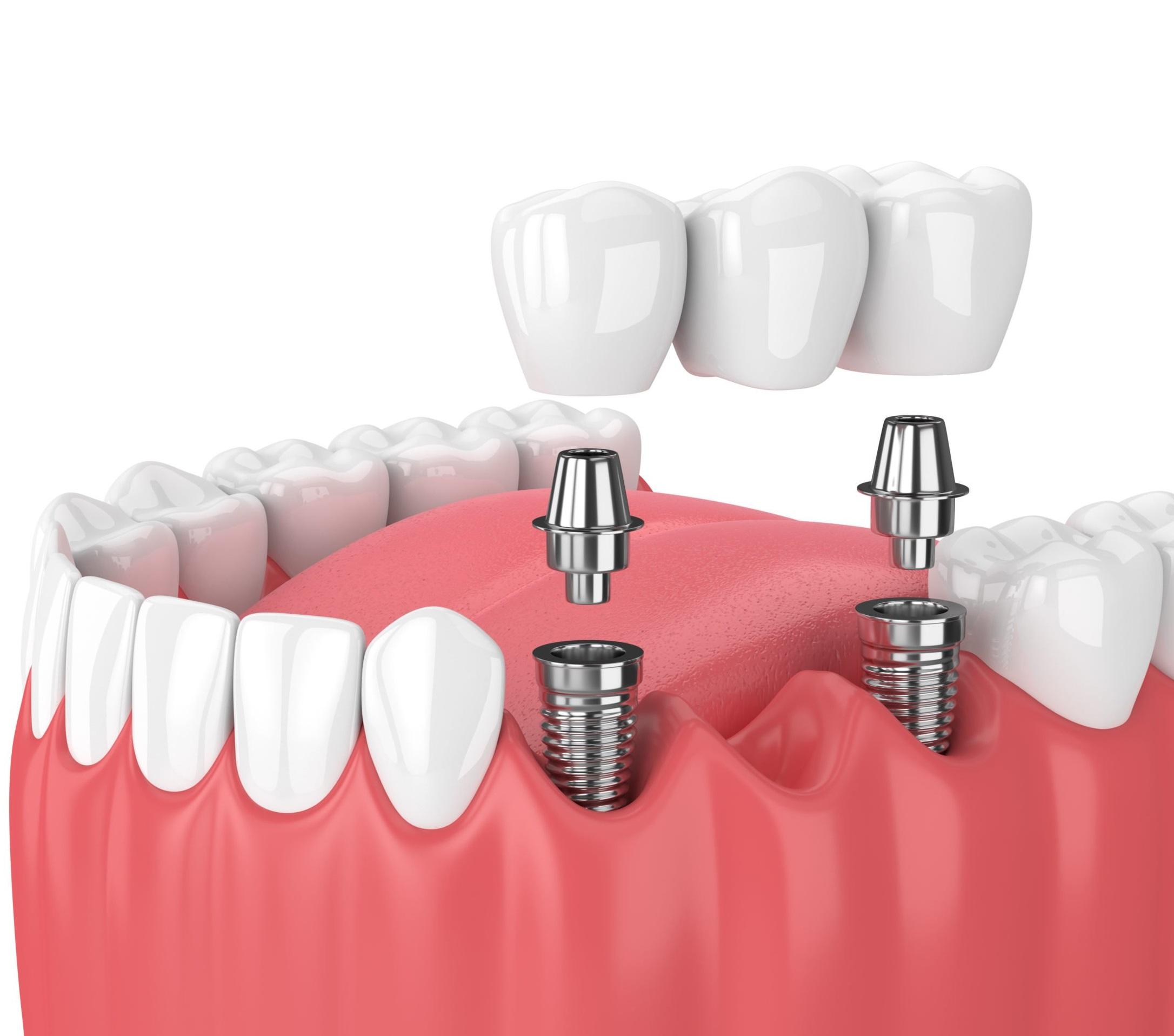Dental Crowns
and Bridges
Dental Crowns and Bridges
A dental bridge, sometimes even known as a “fixed partial denture,” is an artificial tooth that replaces one or more missing teeth. The bridge is typically built by attaching dental crowns to the natural teeth on each side of the gap (referred to as abutment teeth) and cementing the prosthetic teeth in between to keep them in place. Bridge with metal or porcelain wings can also be fastened to dental implants or glued to the backs of neighboring natural teeth.
A dental crown is a shielded coating, generally composed of porcelain, ceramic, metal, or resin, that is applied to a tooth to protect it or increase its strength and aesthetics. The optimum dental crown material for you might be determined by which teeth require crowns and the amount of damage to those teeth. A dental crown is a non-invasive and low-risk treatment. You’ll be able to resume your usual regimen, including brushing and flossing, almost immediately. Dental crowns, like dental bridges, veneers, and dental bonding, can be used as part of a smile makeover.

Advantages of Dental Crowns and Bridges
- A dental bridge can help you regain your ability to talk and eat normally.
- Non-metallic dental crowns can be expected to look exactly like natural teeth.
- Some dental crown solutions, like resin crowns, are moderately priced.
- A dental bridge can enhance your smile while also preserving the structure of your face.
- The dental crown treatment process is well-known for being painless and non-invasive.
- Trying to restore lost teeth can help protect your remaining teeth from moving out of place and distribute the power of your bite more properly.
- A crown can protect a tooth that is showing indications of decay from further harm.
Drawbacks of Dental Crowns and Bridges
- A recently crowned tooth may be uncomfortable or aching. While you may experience discomfort or pain during and after the procedure of dental bridges.
- Dental crowns are not lasting.
- Dental bridges could be costly, notably if you have several gaps to fill.
- There is little possibility of experiencing an allergic response to the substance used in the crown.
- Dental bridges are not as long-lasting as dental implants, which are considered permanent tooth replacement solutions. Although implants are more expensive at first, they can survive for 25 years or more.
- Crowns can chip, so if the crown has to be repaired, you might be charged an extra payment.
- Crowns cannot be whitened using teeth whitening procedures, resulting in a color mismatch. Prevent this by whitening your teeth before getting a crown.
What are the many kinds of dental crowns?
- Metal crowns can be manufactured of gold, palladium, nickel, or chromium alloys. They’re very good at resisting the pressures of your mouth, including biting and chewing, so they’re resistant to chips and breaks and endure the longest of any form of a crown. They simply necessitate the removal of a small portion of the tooth.
- Porcelain crowns are the most realistic appearance, but they also are the most expensive. They’re also stronger than enamel, thus grinding your teeth can result in considerable damage.
- Ceramic crowns are stronger than porcelain crowns of the earlier times, although entirely ceramic crowns are less durable than all-metal or fused porcelain and metal crowns.
- Resin crowns are the most affordable alternative, but they are also the shortest lasting and must be changed more frequently. In reality, resin crowns are thought to be temporary.
What are the many kinds of dental bridges?
Depending on the position of your missing teeth and the structural integrity of the neighboring teeth, a dentist or prosthodontist (who specializes in the restoration of missing teeth) may propose one of these types of bridges.
- Traditional dental bridges – are made of a metal framework that is fused with porcelain or ceramic to resemble real teeth. Dental crowns are linked to pontics, which are artificial teeth that are inserted on both sides of the gap.
- Implant-supported bridges – Because they are kept in place by dental implants that are bonded to the jawbone, implant-supported bridges are regarded as the toughest and most stable form of a dental bridge. Implant-supported bridges are also the most time-consuming (and hence most expensive) form of dental bridge operation. Generally, one surgery is required to anchor the implants in the jawbone, followed by another up to six months later (once the implants have been set) to put the bridge.
- Cantilever bridges – are less popular since they are only utilized when neighboring teeth on just one side of the missing teeth are present. The pontic is maintained in place with a cantilever bridge by gluing a dental crown to only one supporting tooth. Because of the amount of strain, they might exert on adjacent teeth, cantilever bridges are not suggested for the rear of the mouth.
The Process of a Dental Bridge

